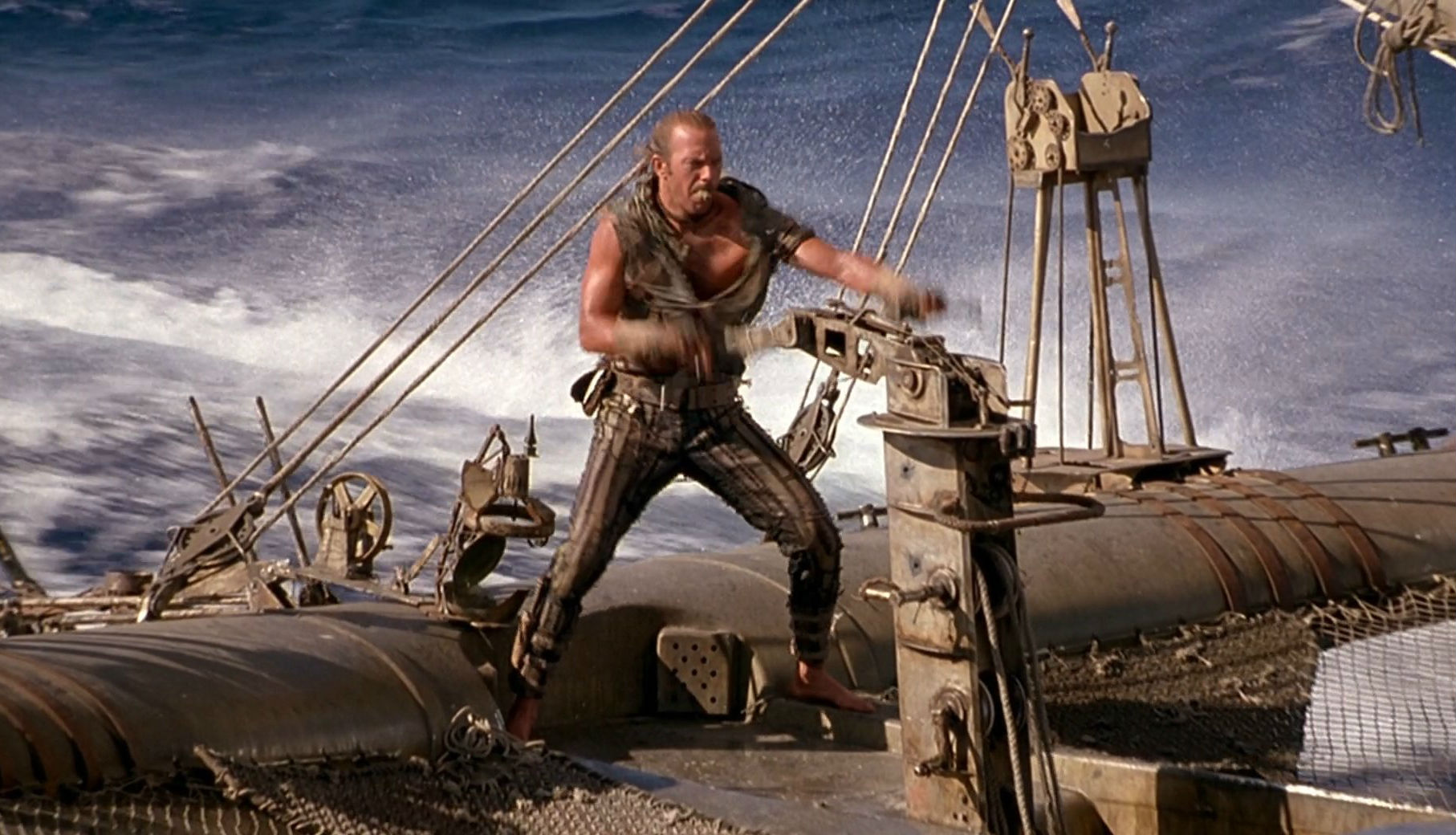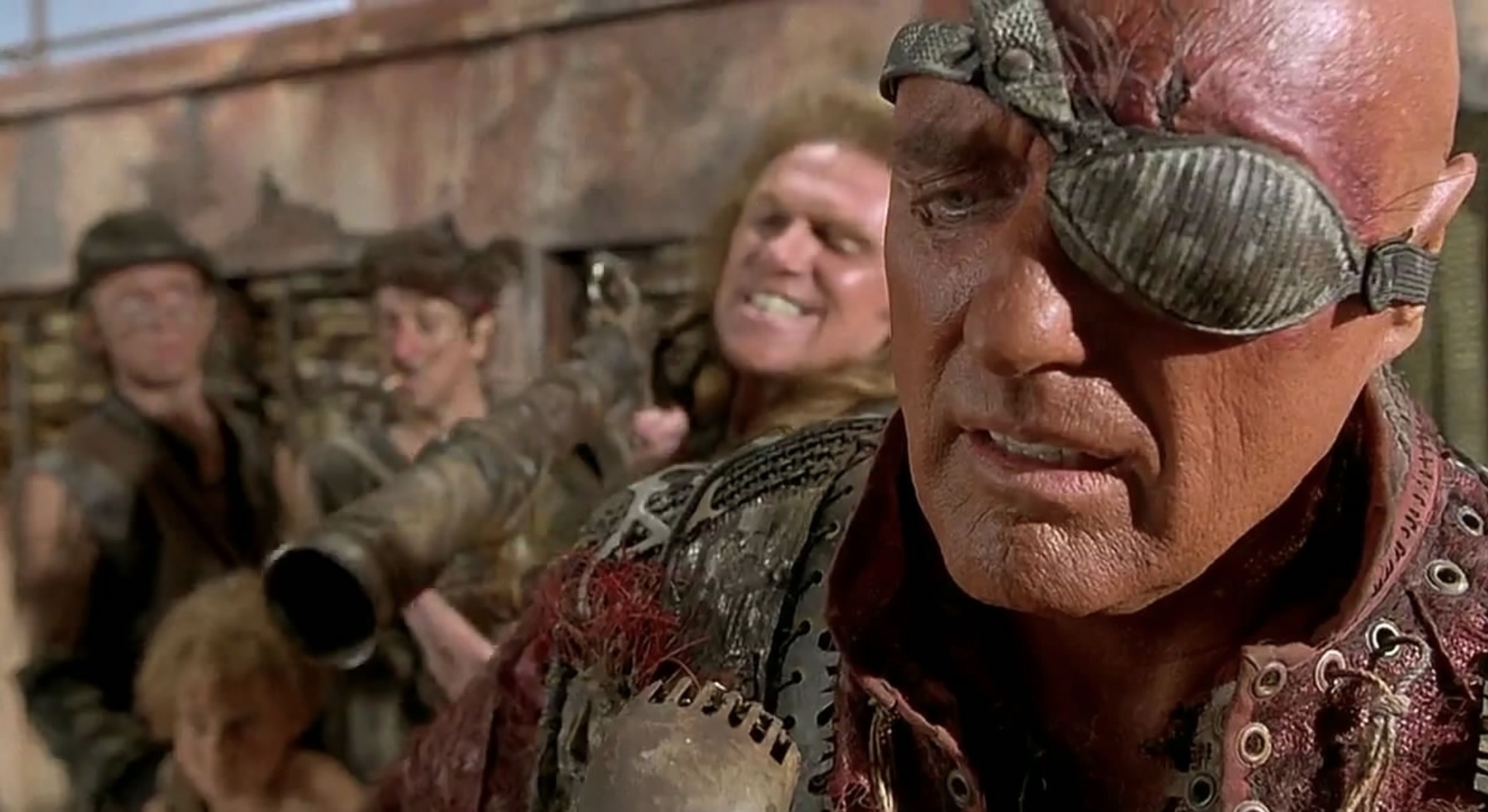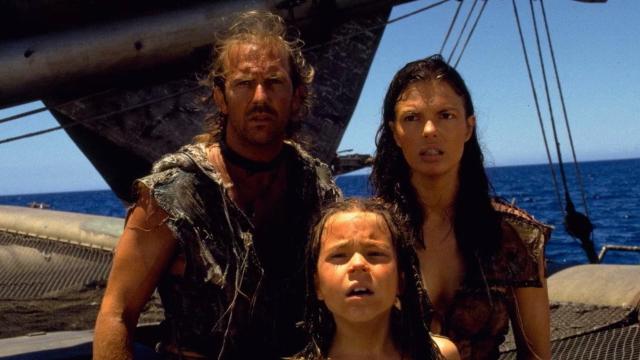Say the phrase “Waterworld” and chances are you’ll think about one of two things: 1) it being a box office disaster; or 2) how Kevin Costner’s hero drank his own pee. The most expensive film ever made upon its release in 1995, it famously cost almost $US180 ($225) million but grossed only $US80 ($100) million in the US, making it one of Hollywood’s biggest bombs at the time — but somehow, it’s lived on at Universal Studio Hollywood as a live-action stunt spectacular for over 20 years.
Although I kind of subconsciously knew it existed, when I went to Universal Studios a few weeks ago I was shocked to discover it was still functioning — and still popular, too. I thought about writing about it, but discovered that a colleague, Charlie Jane Anders, actually wrote the exact same article eight years ago.
I wondered: If the stunt show was still going in 2018, could the movie really be that bad? So I fired up HBO Go and rewatched the Kevin Costner film. And wow, it is… an experience.
The whole “failure” narrative around Waterworld centres around how much money it lost, so it can feel odd how inexpensive the movie looks in 2018. 20+ years later, we’re so desensitised to big-budget action movies that Waterworld feels tame in comparison. Then you start thinking about the practical sets, all the practical effects, and the fact much of it (but not as much as you think) was shot on water. At that point, the expense — and horror — of what went into its filming start to dawn on you.
That said, Waterworld emerges as something we simply don’t see much of anymore: A huge gamble on an original property. The fact that Universal spent all this money on an original idea is genuinely exciting, even in retrospect. Sure it failed, and failures like Waterworld make similar gambles less likely, but watching it, there’s a real excitement to the fact that it’s based on nothing but itself.
The idea that you’re watching a world created for this purpose, with a story and characters you can’t find anywhere else, feels novel. The fact it has a real ending and not an obvious cliffhanger to set up a sequel (though the ending does leave that possibility open) is satisfying. And even though it’s not that old, Waterworld already feels like a throwback to the heyday of cinema. Classic directors David Lean and John Ford would probably be impressed by the making of the movie, whether or not they liked the actual movie.

Unfortunately, the resulting film itself isn’t nearly as impressive as its execution, and ultimately that’s why Waterworld didn’t connect with audiences. The premise and setting are interesting — the polar ice caps have melted, covering the entire world in water — but the actual story is a mess. It follows a half-fish, half-human being (Costner) only called “The Mariner” who is forced to team up with a woman and child (Jeannie Tripplehorn and Tina Majorino) that he hates.
Because the child might have a map to dry land on her back, there are evil men chasing them.
Like its “hero”, the movie is generally kind of one-dimensionally unpleasant. The Mariner has a lot of anger issues, especially against the women he’s transporting, to the point he physically abuses them. It would be an enormous problem if the film were released today, but it’s so pervasive that even by the moral standards of 1995 it had to have felt like too much.

Even when the Mariner turns around and starts to care for his female passengers, his misogyny is replaced by the villain’s, in the form of Dennis Hopper as the leader of post-apocalyptic pirates called the Smokers. He’s all of the Mariner’s most unlikable aspects amplified — he’s pure toxic masculinity, long before the term existed. Between the hero and the villain, the entire movie is permeated with their issues, making the story feel sort of unhealthy.
It drags the film down from its exciting, action-adventure aspirations.
The film tries, though. Oh boy, does it try. That’s especially clear with the action set pieces, which are jaw-dropping without exception, and the orchestra score by James Newton Howard. I mean, listen to this theme. This is some next-level hero shit:
You’ve probably heard it before and thought it was from a much better movie. But no, it’s from Waterworld.
As for the set pieces, there are flying, flaming jet-skis; giant arrows piercing planes; exploding oil ships’ and the all-time best bungee jump rescue in cinema history. These are uniformly awesome, even two decades later, but again the film’s hatefulness keeps you at a distance, making it impossible to get emotionally invested in what’s happening on screen.
At the very least, watching Waterworld again made me realise why Universal Studios Hollywood still has the show. It takes all the good parts of the movie — the music, the action, the world — and cuts out the bullshit. It’s just non-stop, detached action, with none of the movie’s unpleasantness.
This obviously isn’t the legacy that the people who paid $US180 ($225) million to make the movie had envisioned, but it’s at least it’s something.
